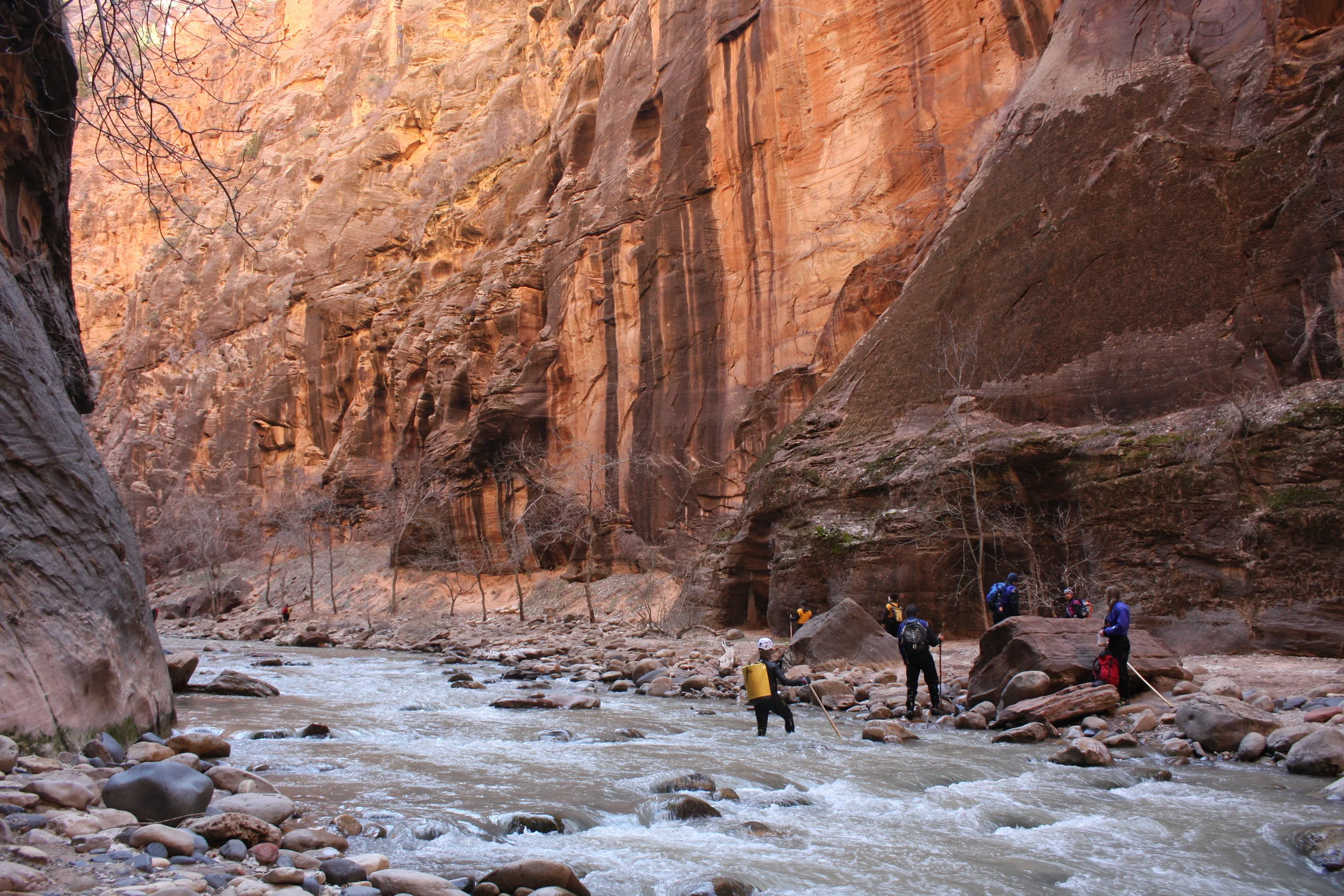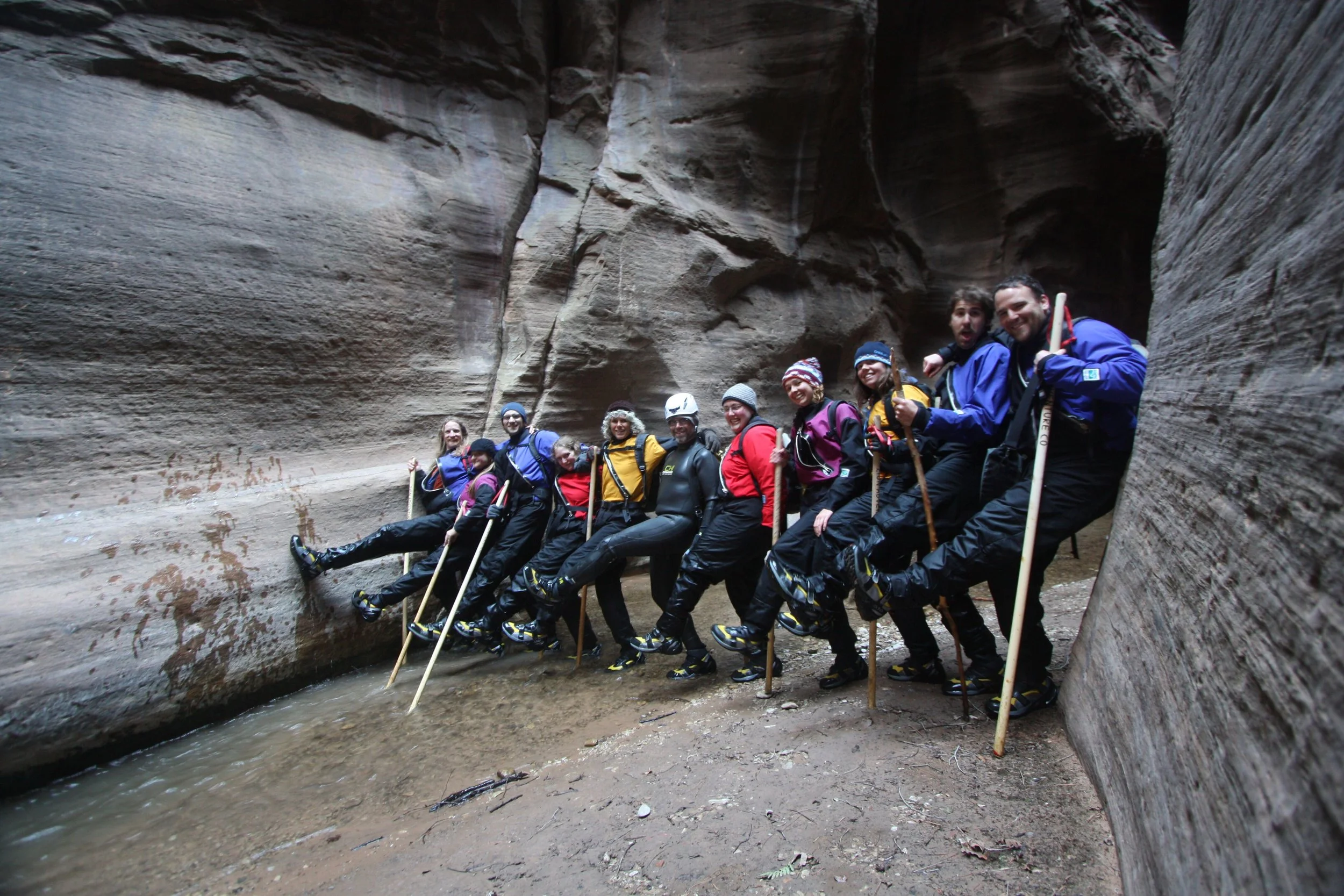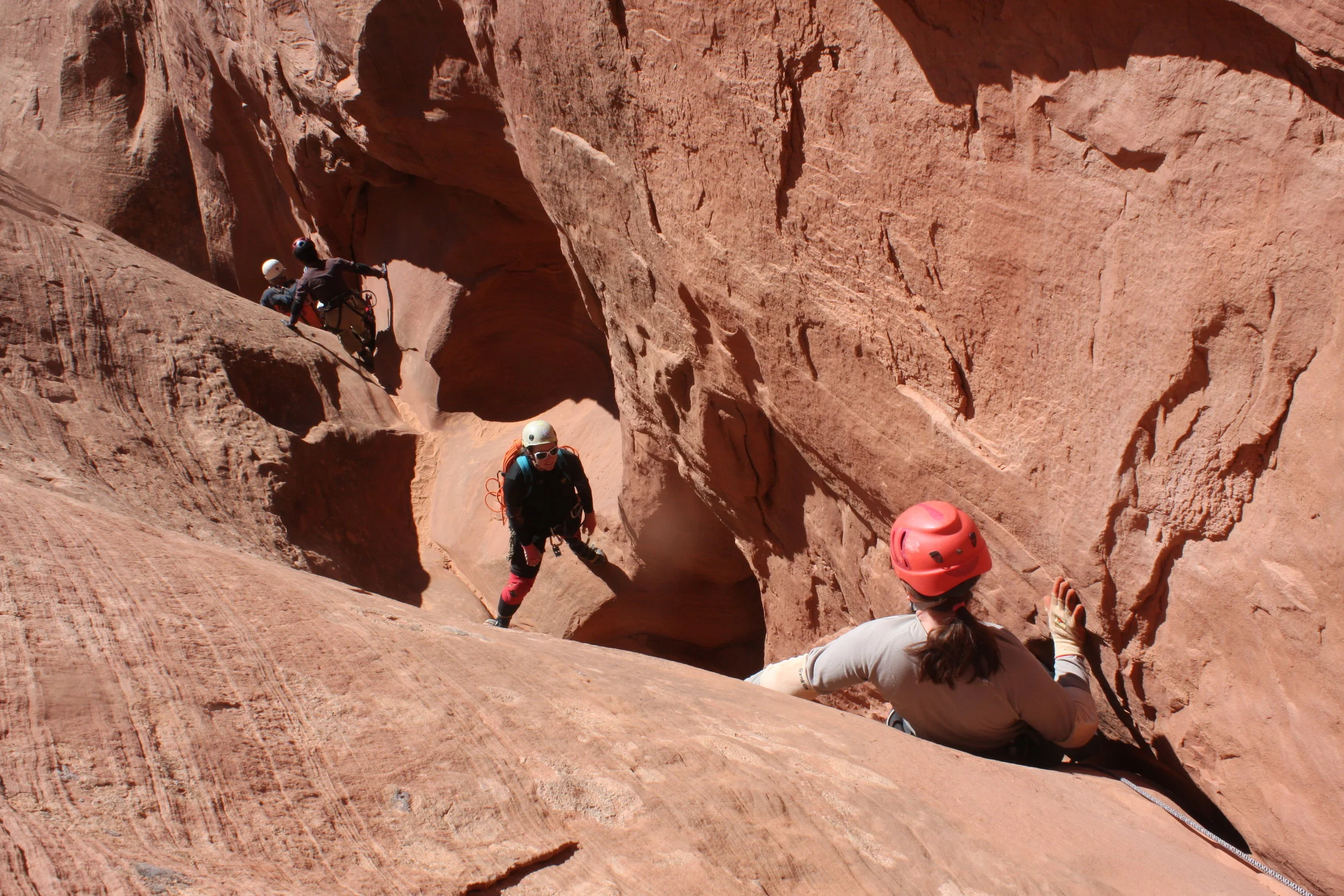I am not fond of large, poorly-managed groups in canyons. Unfortunately, it seems inexperienced persons tend to travel in large groups, with little understanding of how their actions impact others.
What constitutes a large group varies by place and circumstance; but from a social point of view, any group that crowds others can be considered large. In Zion, groups larger than six are not allowed in most canyons, and perhaps we can consider that a good general rule of thumb: groups larger than six are discouraged.
If you find yourself about to embark on a large-group adventure, here are some suggestions on how you can improve the journey for your fellow-travelers:
Break It Up. Take your group out in smaller groups of about 6. If you don't have enough competent leadership to break into groups, you don't have enough to manage the larger group either.
Respect Your Fellow-Travelers. Large groups can be obnoxious to other groups. Play well with others by giving them ample space and keeping the raucous laughter and social chit-chat to a minimum. That touch-football game can probably wait until you are back at the campground.
Carry Extra Gear. Given the carrying power of all those people, bring plenty of ropes so you can keep things moving along.
Formally interact with other groups. When coming upon or being caught by other groups, the leader CAN make a formal contact with the other group and plan who is going to do what to minimize social impacts. In general, the large group is obligated to defer to the small group (for instance, by letting them pass at the first opportunity).
We CAN all get along, especially if we make that an explicit personal and group goal.








Social Etiquette
Canyoneering Etiquette